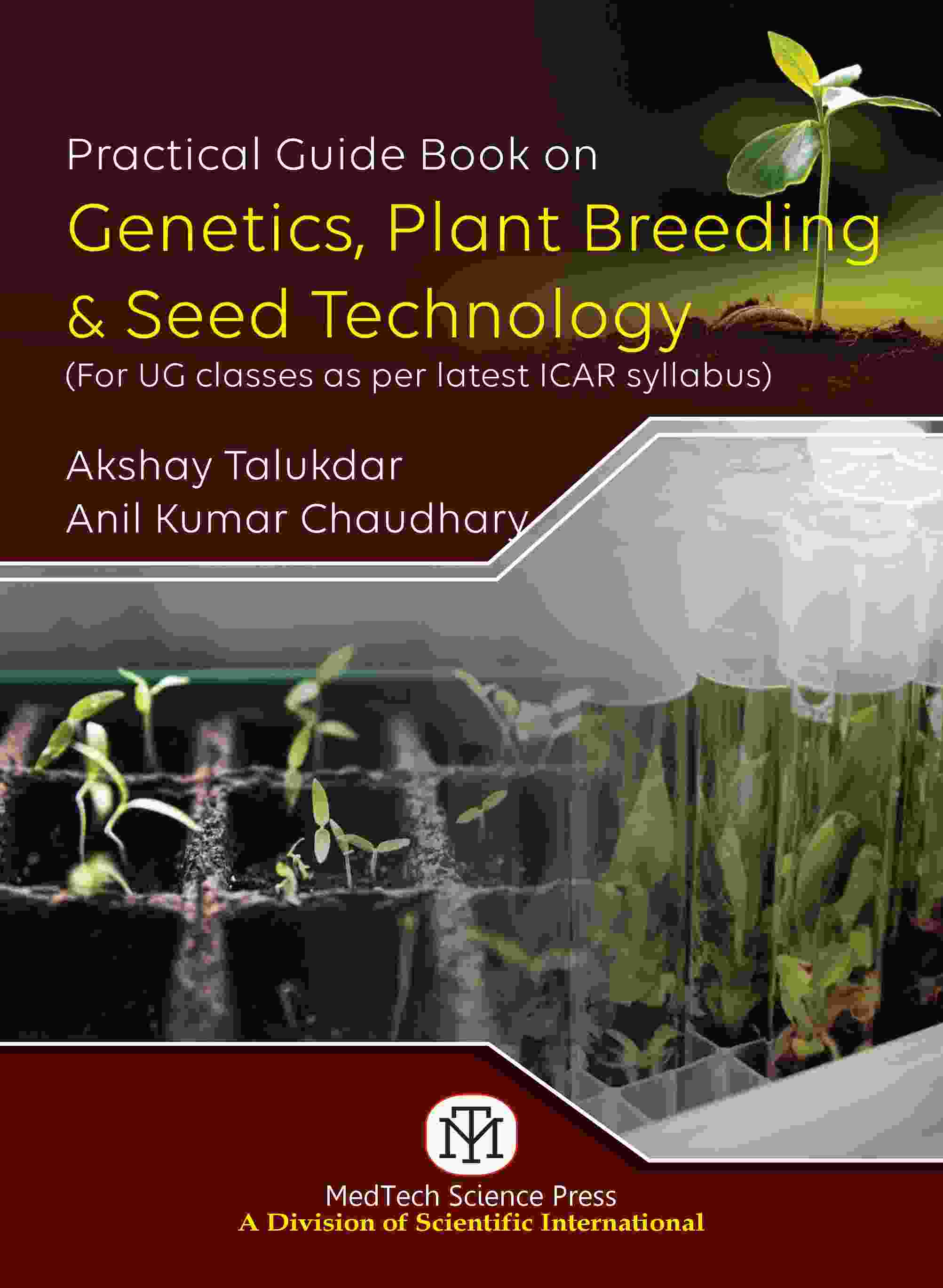Scientific International is a leading publisher of high-quality academic and scientific books across various fields. Our publications are authored by esteemed experts from India and globally, known for their academic excellence and pedagogical approaches. We publish under the MedTech imprint, a rapidly growing platform covering numerous disciplines. Our mission is to provide cutting-edge, accessible content that inspires curiosity and fosters learning, contributing to the global academic community and supporting students, professionals, and researchers worldwide.
Associated partner

PRACTICAL GUIDE BOOK ON GENETICS, PLANT BREEDING & SEED TECHNOLOGY {FOR UG CLASSES AS PER LATEST ICAR SYLLABUS}
Rs. 595
| Attribute | Details |
|---|---|
| ISBN | 9788195237272 |
| Author | DR. AKSHAY TALUKDAR |
| Subject | Agricultural Science |
| Binding | Paperback |
| Total Pages | |
| Copyright Year | 2022 |
Note : Price subject should be change on the website.
The book “Practical Guide Book on Genetics, Plant Breeding and Seed Technology” is a compilation of Practical Manuals of five different Under Graduate courses in the discipline of Genetics and Plant Breeding. It has been prepared as per revised syllabus approved and adopted by the Indian Council of Agricultural Research (ICAR), New Delhi for the Under Graduate courses in Agriculture. Every experiment in the book contains both theory and practical components. The basic information about each practical has been described in simple words for easy understanding of the students. Steps to be followed in conducting various experiments have also been given systematically. Examples have been given for easy understanding of the concepts. Exercises and activities to be performed by the students have been given with each practical so that the students can test their knowledge about each topic. List of reference books and sources of online information have also been listed for future consultation by the students. The practical experiment covered in the book includes description of the compound microscope, cell structure and its organelles, process of cell division- mitosis and meiosis, principle and exercise on Mendelian inheritance, Chi-square (χ2) test, 2-point and 3-point test cross, linkage map construction, description about model organisms (Drosophila, Neurospora, Arabidopsis, etc), structure of DNA and RNA, flower biology and emasculation and pollination techniques in 28 rabi and kharif crops, seed production technologies of 17 field and horticultural crops, testing of seeds for germination, genetic purity, pollination behaviour of self- and cross-pollinated crops, understanding various male sterility system, estimation of mean, variance, heritability, standard deviation (SD), and coefficient of variation (CV), lay out of field experiments in RBD, ANOVA and test of significance, prediction of performance of double-cross hybrids, principles of population handing through pedigree, bulk, single seed descent (SSD) and doubled haploid (DH) methods, quality traits and identification of donors various important traits, grow-out test (GOT), electrophoresis-based seed testing, principles of field inspection for compliance of seed production standards, information about plant germplasm, principles of maintenance breeding, AICRP on various crops, etc. Some of the special features of the book are as follows: - It contains Laboratory Manuals of 5 different Under Graduate courses of agriculture in the discipline- Genetics and Plant Breeding. - It contains 79 practical experiments. - It has description of flower biology and the techniques of emasculation and pollination of 28 crops. - It has description of seed production technologies including seed quality standards of 17 crops. - It has 140 figures depicting the parts of flower, emasculation, pollination and bagging, field lay out, seeds of various crops, different seed tags, plant breeder's tools, etc. It is believed that the book will be a Guide Book to the teachers and Practice Book to the students. Since the book contains practical of five different courses, hence the same book will be useful for the students for the entire UG degree program. Further, it will be easy for the students to revisit the experiments any time conveniently. The book will not only be helpful to the students during UG courses but will also be useful thereafter for any competitive examinations or job interviews.





 Continue With Google
Continue With Google
 Continue With Facebook
Continue With Facebook
